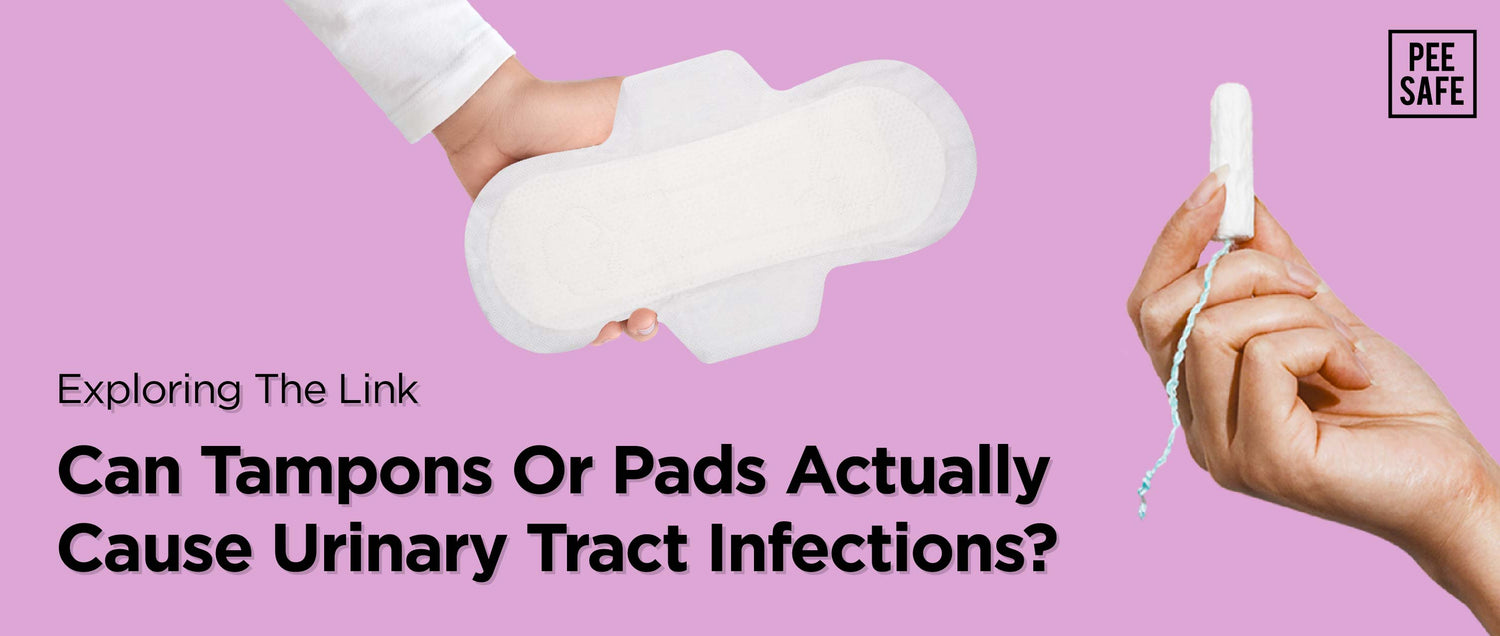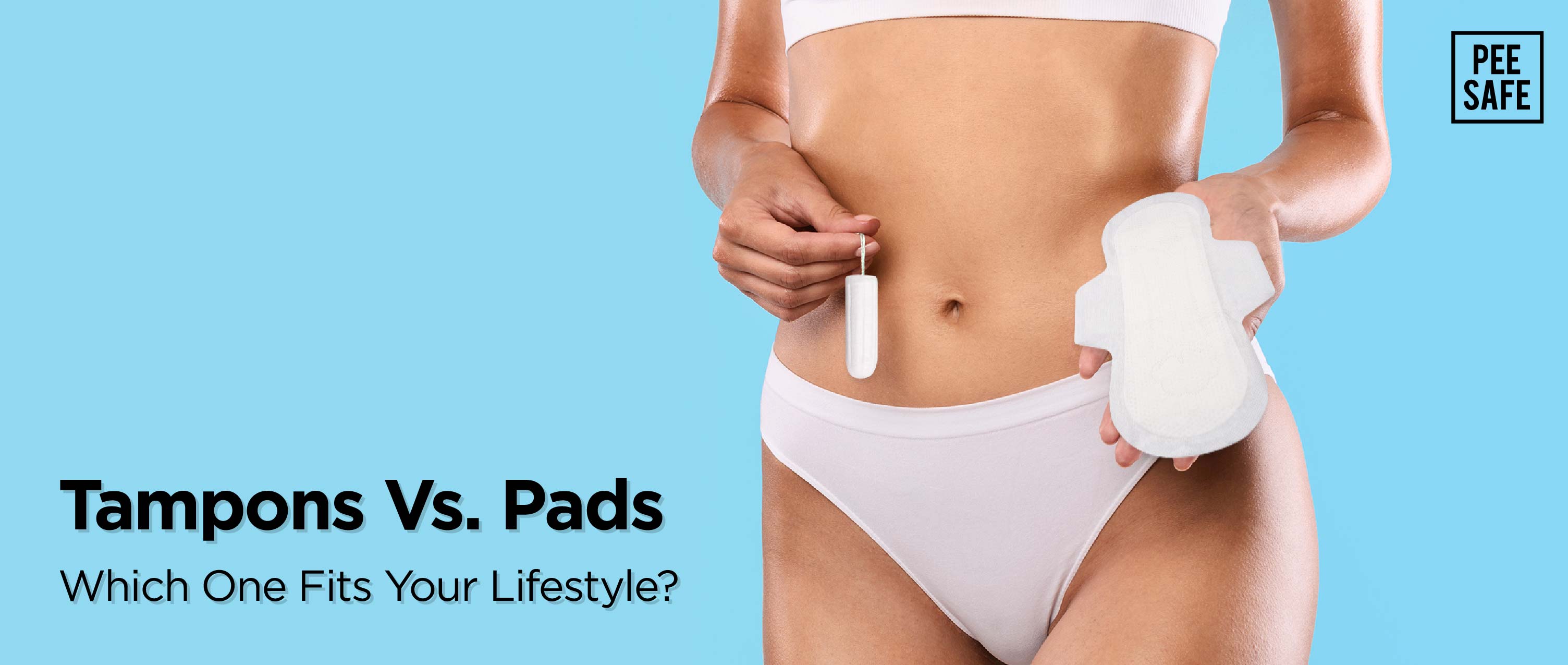Is your urinary tract health at risk due to menstrual hygiene products? It's a question that has been on the minds of many individuals who experience recurrent Urinary Tract Infections (UTIs). Tampons and pads are essentials, providing comfort and protection during menstruation. Let’s explore if pads or tampons can actually cause UTIs or not.
Understanding the link between tampons or pads and UTIs
When it comes to understanding the potential link between tampons vs pads and Urinary Tract Infections (UTIs), it's important to consider the anatomy and physiology of the urinary and reproductive systems. The urethra, which carries urine from the bladder out of the body, is located in close proximity to the vagina and the anus. This proximity increases the risk of bacteria from these areas entering the urethra and causing infection. Additionally, the urethra is shorter in females when compared to males, making it easier for the bacteria to reach the bladder.
Tampons and pads, while designed to absorb menstrual flow, can also inadvertently introduce bacteria into the vaginal area. When used incorrectly or left in for extended periods, tampons can create a moist environment that promotes bacterial growth. Similarly, pads can trap moisture, providing an ideal breeding ground for bacteria. These factors can potentially increase the risk of urinary tract infections.
Common misconceptions about tampons and pads causing UTIs
There are several common misconceptions surrounding the link between tampons, pads, and UTIs. One of the most prevalent misconceptions is that the absorbent materials used in tampons and pads can directly cause UTIs. However, it may not be the materials themselves, but rather the way they are used and maintained, that can contribute to UTIs.
Another misconception is that tampons or pads can introduce harmful chemicals into the body, leading to UTIs. While it is true that some menstrual products may contain trace amounts of chemicals, such as fragrance, the level is typically low and unlikely to cause UTIs. The focus should instead be on proper usage, hygiene, and maintenance of menstrual products to minimize the risk of infection.
Factors that increase the risk of UTIs and how they relate to tampons or pads
Several factors can increase the risk of urinary tract infections, and some of these factors may be related to the use of tampons or pads.
One such factor is improper insertion or removal of tampons, which can introduce bacteria into the vaginal area. Leaving tampons in for extended periods, especially overnight, can also create an environment conducive to bacterial growth.
Pads, on the other hand, can increase the risk of UTIs by trapping moisture and heat, providing an ideal breeding ground for bacteria. Prolonged use of pads without changing them regularly can exacerbate this risk.
Additionally, the materials used in tampons and pads can play a role in UTI risk. Some materials may be more prone to bacterial growth or may cause irritation to individuals with sensitive skin, increasing the likelihood of infection. So, it is suggested to use products made up of organic ingredients.
Tips for preventing UTIs while using tampons or pads
While the potential link between tampons, pads, and UTIs may raise concerns, there are several strategies you can adopt to minimize the risk of infection while using these menstrual products.
- Practice good hygiene: Wash your hands thoroughly before and after inserting or removing tampons, and when changing pads. This helps reduce the risk of introducing bacteria into the vaginal area.
- Choose the right absorbency: Use tampons or pads with the appropriate absorbency for your flow. Using higher absorbency products than necessary can increase the risk of bacterial growth.
- Change frequently: Regularly change tampons or pads to prevent the buildup of moisture and bacteria. Aim to change them every 4-6 hours, or more frequently if needed.
- Avoid overnight use: Consider using alternative menstrual products, such as menstrual cups or period panties for overnight protection. These options allow for better air circulation and may reduce the risk of UTIs.
- Opt for cotton-based products: Choose tampons or pads made from natural, breathable materials like cotton. These materials are less likely to cause irritation and may help maintain a healthy vaginal environment.
Conclusion
While the link between tampons, pads, and UTIs is a topic of ongoing research, it is important to make informed decisions about your menstrual hygiene to minimize the risk of UTIs. Practicing good hygiene, using the right absorbency, and changing tampons or pads regularly are simple yet effective strategies to reduce the risk of infection.
In case you’re using reusable sanitary pads, make sure to clean them thoroughly by using mild soap and warm water. Avoid storing them in areas prone to moisture and heat which can promote bacterial growth. Instead, store them in a clean and dry place and replace them as and when needed.
Remember to seek medical advice if you experience symptoms of a UTI, as early diagnosis and treatment are necessary for a swift recovery. By staying informed and taking proactive measures, you can prioritize your vaginal and urinary health while maintaining your comfort and confidence during menstruation. To know more, visit the Pee Safe website.
-
✍️ This article was curated by Komal Gupta




























